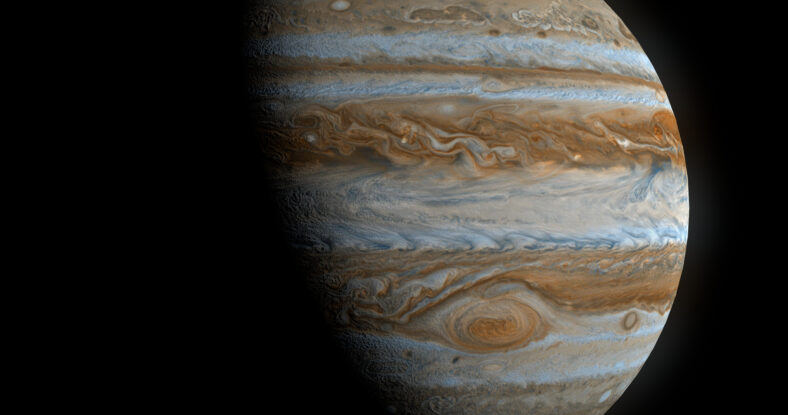An Amateur Astronomer Figured Out That Jupiter’s Clouds Are Not Made Of Ammonia Ice

The planet Jupiter never fails to impress with its swirling cloud bands and massive storms like the well-known Great Red Spot.
Now, new research from a team of citizen scientists working in conjunction with professional astronomers has challenged the long-held belief that Jupiter’s clouds are formed of ammonia ice.
Instead, they propose that the clouds actually consist of ammonium hydrosulfide mixed with smog. The findings help clarify how Jupiter’s cloud layers and atmospheric dynamics work.
The discovery was made by Dr. Steven Hill, an amateur astronomer based in Colorado. He recently showed that commercially available telescopes and some colored filters can be used to map the ammonia and cloud-top pressure in Jupiter’s atmosphere.
The results not only revealed that amateur astronomers were able to map ammonia but also that the clouds are located too deeply in Jupiter’s warm atmosphere to be made of ammonia ice.
A team of professional scientists led by Professor Patrick Irwin from the University of Oxford’s Department of Physics used Dr. Steven Hill’s analytical method to conduct their own observations of Jupiter with the Multi Unit Spectroscopic Explorer (MUSE) instrument based in Chile.
MUSE uses spectroscopy, enabling the scientists to see Jupiter’s gases as light at different wavelengths. Then, they simulated the light’s interactions with the gases and clouds in a computer model.
The team found that Jupiter’s clouds, the ones that are visible when looking through backyard telescopes, were deeper than previously thought, in a region of warmer temperature and higher pressure.
It was too warm for the condensation of ammonia, so the clouds had to be composed of something else: ammonium hydrosulfide.

Sign up for Chip Chick’s newsletter and get stories like this delivered to your inbox.
“I am astonished that such a simple method is able to probe so deep in the atmosphere and demonstrate so clearly that the main clouds cannot be pure ammonia ice,” said Professor Irwin.
“These results show that an innovative amateur using a modern camera and special filters can open a new window on Jupiter’s atmosphere and contribute to understanding the nature of Jupiter’s long-mysterious clouds and how the atmosphere circulates.”
The ammonia maps that can be produced from this simple technique come at a fraction of the cost of more advanced methods.
This allows citizen scientists to track ammonia and cloud-top pressure in Jupiter’s atmosphere themselves and make useful contributions to science.
Irwin and colleagues suggest that in regions where moist, ammonia-rich air is raised upward, ammonia does not condense to develop into a thick cloud because it is destroyed or mixed with photochemical products faster than ammonia ice is able to form.
So, the clouds may actually be made up of ammonium hydrosulfide mixed with smoggy products to create the red and brown colors of Jupiter. In small regions, updrafts may be fast enough to form ammonia ice.
The study was published in the Journal of Geophysical Research.
More About:News